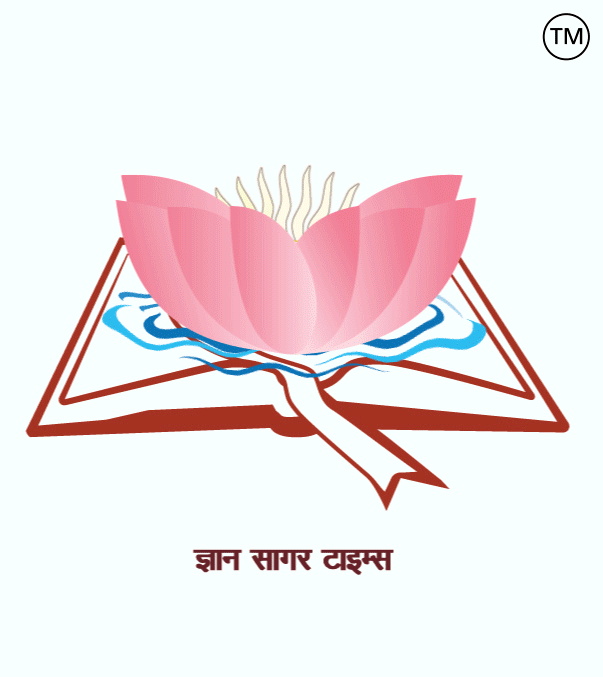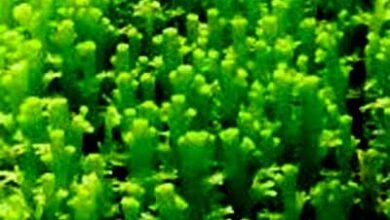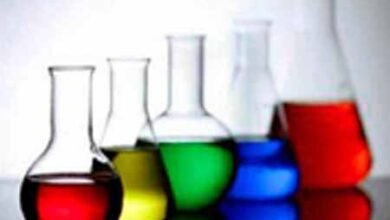
जन्तु विज्ञान से संबंधित-140.
|
1. Who won the Nobel Prize for Gene DNA-related discovery? = Hargobind Khurana. 2. What is the number of chromosomes in the human body? = 46 (23 pairs). 3. What is the pH value of the blood of a healthy human body? = 7.4 4. How many bones are in the body of newborns? = 300. 5. Which is the longest bone of the human body? = ‘Femur’. 6. Which is the smallest bone of the human body? = Stapes. 7. Healthy humans have blood pressure? = 120/80 mmHg. 8. How many liters of blood does a healthy human body have? = 120/80mm Hg. 9. Which cells present in the blood help in fighting germs? = White blood cells. 10. The human body has the largest gland. = Liver. 11. What is the main function of arteries? = Oxygenated blood from the heart to different parts of the body. 12. Who discovered the functioning of the human stomach? = William Beaumont. 13. Digested food is mostly absorbed through? = Small intestine. 14. What does pancreatic juice work for? = Breakdown sugars fats starches into simpler forms. 15. Bile juice which plays an important role in the digestion of fat in the human body is produced by? = By liver. 16. What should be included as much as possible in a child’s diet at the age of 2? = Protein. 17. What are the teeth of children who fall between the age of 06-08 years? = Milk teeth. 18. Anaemia is usually caused by? = Deficiency of iron. 19. Skin cancer is caused by whose ultraviolet rays? = Sun. 20. Where are Growth hormones produced? = Pituitary gland. 21. Which disease HIV is detected by ELISA test? = AIDS. 22. Dengue is a carrier of virus? = Female Aedes Mosquito. 23. Where is the image of the object formed in the eyes? = Retina. 24. Which part of the eye is donated in the eye donation? = Cornea. 25. Epinephrine hormone is used as a medicine to treat those problems? = Heart. 26. Antibiotics are not affected by colds and flu as they cause them. = Virus. 27. What are the micro-organisms that breed inside the body of a heterotrophic organism? = Virus. 28. Which lens is used in the glasses of a person suffering from myopia? = Concave lens. 29. Which lens is used in the glasses of a person with far-sightedness? = Convex lens. 30. A person suffering from an eye defect cannot see the surrounding objects but can see very distant objects, what kind of person is suffering from this? = Long vision defect. 31. What is a special type of carbohydrate present in the grass that cannot be digested by humans? = Cellulose. 32. Which organism breathes through its skin? = Earthworm. Dr. (Prof.) Amarendra Kumar ========== ========= =========== जन्तु विज्ञान से संबंधित-140.
1. जीन DNA से संबंधित खोज के लिए नोबेल पुरस्कार किसे मिला था? = हरगोविंद खुराना. 2. मानव शरीर में गुणसूत्रों की संख्या होती है? = 46 ( 23 जोड़ा). 3. स्वस्थ मनुष्य के शरीर के रक्त का पी. एच. मान होता है? = 7.4 4. नवजात बच्चों के शरीर में कितनी हड्डियां होती है? = 300. 5. मानव शरीर की सबसे लंबी हड्डी को कहते है? = ‘फीमर’. 6. मनुष्य के शरीर की सबसे छोटी हड्डी कहते है? = ‘स्टेप्स’. 7. स्वस्थ मनुष्य रक्त दाब होता है? = 120/80 mm Hg. 8. स्वस्थ मनुष्य के शरीर में रक्त का कितना लीटर होता है? = 05-06 लीटर. 9. रक्त में उपस्थित कौन सी कोशिका रोगाणुओं से लड़ने में मदद करती हैं? = सफेद रक्त कोशिकाएं. 10. मानव शरीर की सबसे बड़ी ग्रंथि होती है? = यकृत. 11. धमनियों का मुख्य कार्य क्या है? = ऑक्सीजनेटेड रक्त ह्रदय से शरीर के विभिन्न हिस्सों में ले जाना. 12. मानव पेट की कार्यप्रणाली के बारे में किसने पता लगाया था? = विलियम ब्युमोंट. 13. पचा हुआ भोजन ज्यादातर किस के माध्यम से अवशोषित होता है? = छोटी आंत. 14. अग्नाशय रस क्या काम करता है? = कार्बोहाइड्रेट प्रोटीन और वसा को सरल पदार्थों में विभाजित करता है. 15. पित्तरस जो मानव शरीर में वसा के पाचन में एक महत्वपूर्ण भूमिका निभाता है , किसके द्वारा निर्मित होता है? = यकृत के द्वारा. 16. किसी 2 साल की उम्र में बच्चे के आहार में अधिक से अधिक क्या शामिल करना चाहिए? = प्रोटीन. 17. 06-08 साल की उम्र के बीच बच्चों के जो दांत गिरते हैं उन्हें क्या कहा जाता है? = दूध के दांत 18. रक्ताल्पताo आमतौर पर किसके कारण होता है? = आयरन के कमी के कारण. 19. त्वचा का कैंसर किसकी पराबैंगनी किरणों से होता है? = सूर्य. 20. वृद्धिकर हार्मोंस कहाँ उत्पादित होते हैं? = पीयूष ग्रंथि. 21. एलीसा प्रणाली ( ELISA Test ) से किस बीमारी के HIV वायरस का पता लगाया जाता है? = एड्स. 22. डेंगू वायरस का वाहक है? = मादा एडीज मच्छर. 23. वस्तु का प्रतिबिंब आँखों में कहाँ बनता है? = रेटिना. 24. नेत्रदान में आँखों के किस भाग को दान किया जाता है? = कार्निया. 25. एपिनेफ्रीन हार्मोन किसकी समस्याओं के इलाज के लिए एक दवा के रूप में इस्तेमाल किया जाता है? = हृदय की. 26. जुकाम और फ्लू में एंटीबायोटिक प्रभावित नहीं होती क्योंकि इनके होने का कारण है? = वायरस. 27. वह सूक्ष्म जीव जो परपोषित जीव के शरीर के अंदर ही प्रजनन करते हैं उसे क्या कहते हैं? = वायरस. 28. निकट दृष्टि दोष से पीड़ित व्यक्ति के चश्मे में कौन-सा लेंस प्रयोग किया जाता है? = अवतल लेंस. 29. दूर दृष्टि दोष से पीड़ित व्यक्ति के चश्मे में कौन-सा लेंस प्रयोग किया जाता है? = उत्तल लेंस. 30. नेत्र दोष से पीड़ित व्यक्ति आसपास की वस्तुओं को नहीं देख सकता लेकिन बहुत दूर की वस्तुओं को देख सकता है इस तरह का व्यक्ति किससे पीड़ित हैं? = दीर्घ दृष्टि दोष. 31. घास में मौजूद एक विशेष प्रकार का कार्बोहाइड्रेट जिसे मानव द्वारा पचाया नहीं जा सकता , क्या कहलाता है? = सेल्यूलोज. 32. कौन-सा जीव अपनी त्वचा से श्वसन करता है? = केंचुआ.
(प्रो.) डॉ. अमरेंद्र कुमार.
|






